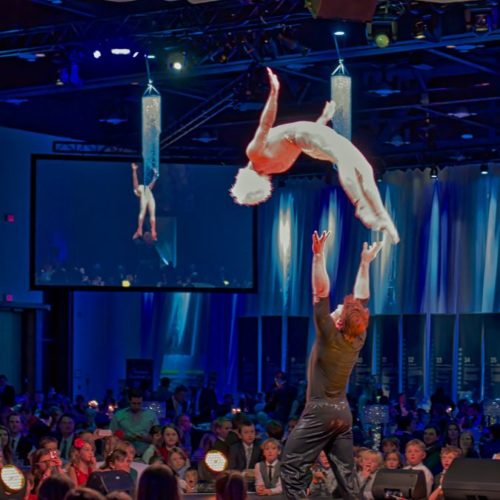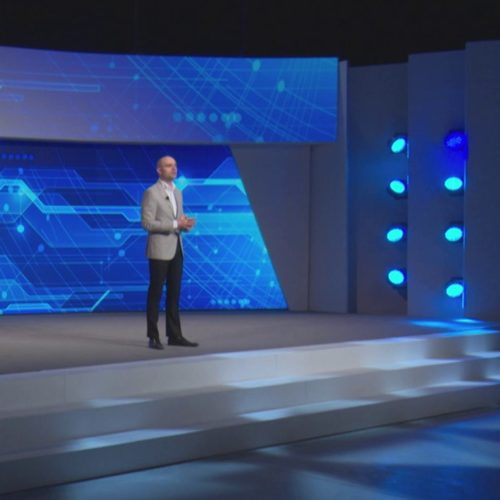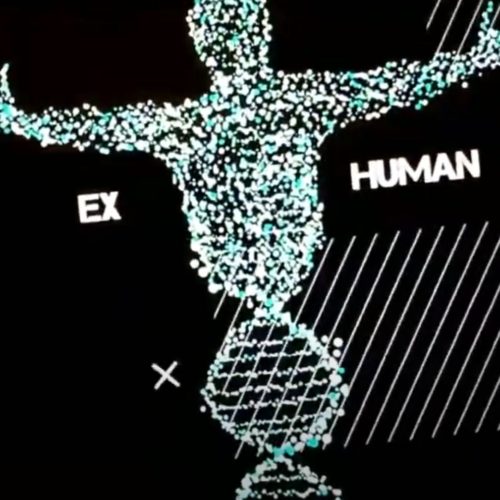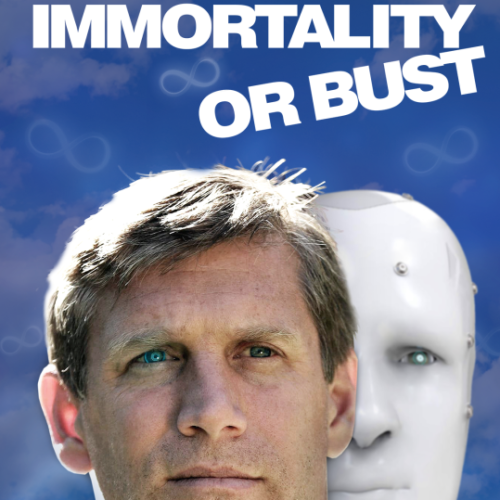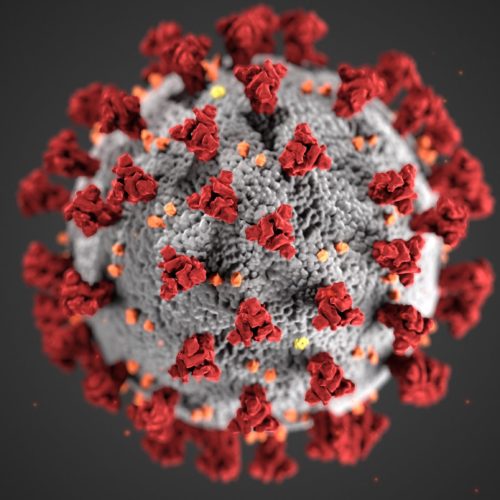The Search for Immortality
Michael Fossel / Op Ed
Posted on: November 11, 2015 / Last Modified: April 15, 2024
Editor’s Note: This is chapter four from The Telomerase Revolution: The Enzyme That Holds the Key to Human Aging
and Will Soon Lead to Longer, Healthier Lives. If you have not done it yet, you should first read Chapter 3 – Why We Age.
Old theories never die; their proponents do. Anonymous
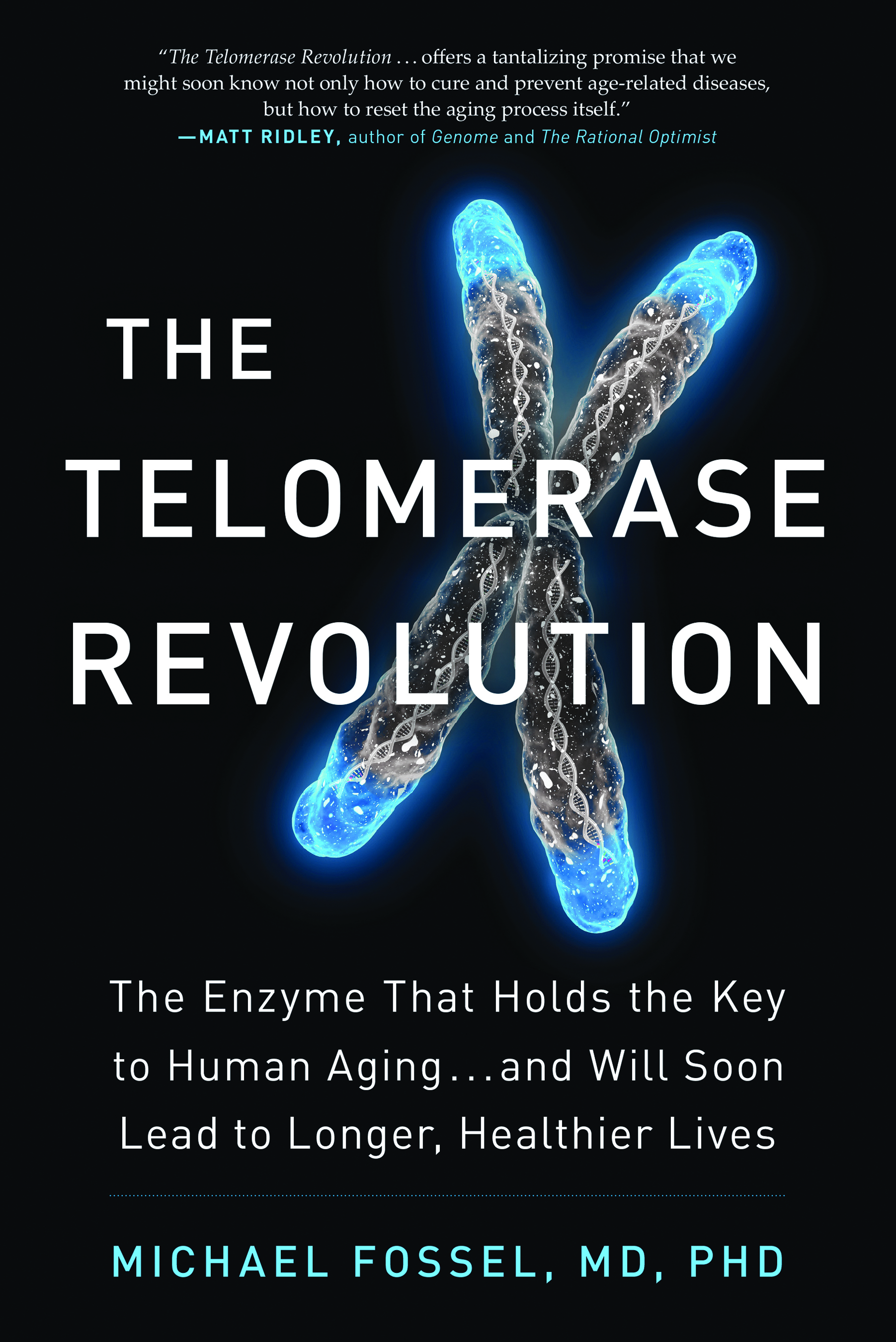 For twenty-five years, medicine has teetered on the brink of transformation.
For twenty-five years, medicine has teetered on the brink of transformation.
By 1990—thanks to Hayflick, Olovnikov, Harley, and others—we had a basic understanding of cell aging but were only beginning to suspect that cell aging explained human aging. The idea that telomeres might help us cure age-related disease was at best a cautious dream.
New theories require data, but also demand determination and patience. The telomere theory of aging was no exception. As with any new theory, it wasn’t enough to be right or to have supportive data. It takes time for a new theory to gain acceptance. As we approached the turn of the century, a new generation of scientists and physicians began to work and build their careers with a new view of how aging and age-related diseases work.
One: Promising Beginnings
Geron, a biotech company based on telomere research, was founded by Michael West in 1990. Mike West saw the implications of cell aging for human disease. Geron’s initial goal was to find a way to intervene in the aging process. Mike showed genius in his grasp of the aging process, and he conveyed his vision to his investors in a valiant effort to move the burgeoning field of telomere biology from the laboratory to the clinic.
Geron Corporation—the name comes from the Greek root word for aging—was the first biotech corporation aimed directly at preventing and reversing human aging. Geron hired Cal Harley as their chief scientific officer in 1992. Eventually, the company held most of the major patents for potential clinical interventions that arose from telomere research. Geron had three major thrusts:
- Using telomerase activation to treat aging and age-related diseases
- Using telomerase inhibition to treat cancer
- Developing stem cell therapies
The ideas that aging was driven by telomere shortening and that we might be able to change the aging process were novel and, unsurprisingly, difficult for many people to accept. Even for those who saw the potential, there was little solid supporting data during those first ten years. Investors and board members could easily grasp the potential for a cancer therapy, but they had a harder time believing in the idea that we might reverse the cellular aging process and create profitable cures for age-related diseases. Even some of those who were key players in the field, Len Hayflick among them, remained leery of the idea that telomerase might play a role in human aging. This inherent conservatism—and the cautious fiscal decisions that it drove—reflected the views of most of the scientific community throughout the 1990s.
Nonetheless, the first ten years at Geron were heady times for those of us who saw the potential of telomerase for treating human aging and disease. During that time, Geron focused on understanding how telomerase works, identifying its co-factors amassing data on the correlation between telomere length and cell aging in multiple cells and species, and other side issues. They conducted important research on telomeres in cancer cells and stem cells. And in 1999 Geron finally clinched the case, showing that telomere shortening doesn’t merely correlate with cell aging, but causes it.
It was always hard to keep up with Mike West, and not just intellectually. He might be in his office finishing a patent, he might be in the laboratory counting cells, but he might just as likely be talking about stem cells in Paris or discussing aging cells in Singapore. A world map in Geron’s hallway was covered in multicolored pins, trying to keep track of him. Where in the world was Mike West?
Wherever Mike was, he was always a step ahead of everyone else.
In 1993, Geron invited me to fly out to California, gave me access to their unpublished data, much of it proprietary, and had me give several talks about the clinical potential of telomerase for aging and disease. Even then, some of us clearly saw the enormous potential for curing diseases. Seeing the importance of what was happening at Geron, the CEO, Ron Eastman, wanted me to document that history, but the ideas themselves were more important than the company. The book I wrote, Reversing Human Aging, was the first history of our growing understanding of why and how aging occurs.
As the only physician working in parallel with Geron, I provided clinical guidance, but I was also one of the few people at Geron who, along with Mike West, was completely committed to the belief that we really could cure age-related diseases. I was the optimist, the theoretician, and the one who told the story to the public. I was the one who saw the broader picture, who could understand the entire theory of aging and its clinical implications. My background—as a medical professor, a university teacher of the biology of aging, and a researcher—enabled me to clearly explain the general telomere theory of aging to the clinical community and to the public.
On my trips to Geron, I stayed with my friend Cal Harley, their chief scientific officer, and his wife at their lovely home in Palo Alto. We spent considerable time discussing the science and my clinical understanding of the aging process. Over dinner one evening, I pointed out that our understanding of telomeres might allow us to construct a single, unified theory of aging. I argued that telomeres were the most effective point of clinical intervention for the diseases of aging, allowing us to prevent and cure most age-related diseases, for which medicine had little or nothing to offer. I was surprised to find that Cal generally disagreed that telomerase could become an effective and innovative medical therapy. I asked him to put a number on how important telomerase might be in driving the aging process. His answer: “No more than fifteen percent.” Despite being the key scientific leader at Geron, Cal was still pessimistic about the clinical potential of telomerase, as were many of his Geron colleagues. Ironically, while Geron’s vision gradually became more limited over the next decade, Cal himself became more optimistic.
These were intoxicating times.
Most of us had the conviction that something remarkable was in the wind. For the scientists at Geron, there was the knowledge that telomeres might control aging in cells. For me and a few others, there was a strong suspicion that the implications went far beyond aging cells. As a professor of medicine, I had spent years not merely trying to understand human aging, but also trying to find a way to cure the diseases of aging. Telomere biology and cell aging suggested a way to fit everything we knew about the aging process into a single clear, consistent picture, one that an increasing number of us began to share.
There was something far more important at stake than a scientific understanding of aging. Just as the physicists of the 1800s thought that they “almost” completely understood the universe— until relativity and quantum mechanics changed everything in the early twentieth century—biologists and physicians had thought that they “almost” understood aging. And now telomere biology was changing everything. But the revolutionary change struck much deeper than just gaining a more sophisticated understanding of cell aging.
There was a paradigm deeply embedded in medicine and biology that no matter how well we might understand aging, it could never really be changed. We might someday fully understand the molecular details of aging. We might even use this knowledge to slow the aging process and provide palliative care for Alzheimer’s disease and atherosclerosis. But we could never reverse or even stop the aging process.
Or could we?
That was the astonishing implication of our new understanding of aging.
Not only did telomeres and cell aging explain how we aged, but for those who looked more closely, the implication was that we might reset the telomeres, reverse cell aging, and thereby cure age-related human diseases. Which is to say that we might reverse human aging.
As a clinician, my concerns have never been purely academic. My goals were practical and clinical. I wanted to improve lives. I wanted to find the single most effective point of intervention for age-related disease. I had already been writing a medical textbook about the aging process, but I was so struck by the implications of telomere research and by its absolutely unprecedented implications for clinical medicine that I shelved the textbook. Instead, I decided to write the first ever book to explain how we might reverse human aging.
Geron had given me free access to their data, but in 1995, much of that data was still preliminary. We were sure that telomere shortening played a role in cell aging, but did it cause cell aging or was it a result? It was clear that young cells had long telomeres, while old cells had shorter telomeres, but which came first, aging or telomere shortening? We suspected that telomere shortening somehow changed gene expression and that drove cell aging, but it had yet to be proved.
The telomere theory of aging was elegant and consistent, and the potential for human medicine was stunning and unprecedented, but the data was not yet conclusive. While I could certainly explain the theory and the research data then available, much of the book would have to be speculative rather than factual. Clearly, the book was not simply a scientific textbook—such as I ended up writing a decade later for Oxford University Press—but a book meant for the general public. So I went on to explain not only the limited theory of how cells age, but also a general theory of human aging and what it could mean to all of us.
It was a difficult task.
Aging science is a field in which everyone divides into two distinct camps, each of which distrusts the other. In one camp are the enthusiasts—excited laymen and a few professionals, regarded by most as fringe elements, who go far beyond the scientific data, often claiming that this miracle food or that fashionable drug can prevent aging. The other camp is made up of thoughtful, serious researchers and clinicians who are so leery of being labeled fringe elements that they take great pains to dissociate themselves and their work from the enthusiast group.
The enthusiast groups usually have large annual meetings with dozens, even hundreds, of sales booths and passionate speakers who make grandiose claims with little factual support. These passionate supporters put great effort into trying to change national regulatory restrictions and research priorities to match their own views. The head of the National Institute of Aging once confessed to me that a few of the key individuals in one of these groups “had done more to undermine congressional support for aging research than anyone in this country.” He noted that some congressmen had come to assume that the zealots represented the research community as a whole and saw little reason to provide support for what Congress viewed as “nutty ideas.” Given this perception, the scientific and medical communities were often afraid of being tarred with the same brush and carefully distanced themselves from these evangelists of the aging community.
Mike West and I once attended a well-known annual conference on “anti-aging medicine.” Various presentations claimed that magnets, crystals, meditation, deionized water, or vitamin supplements would reverse the aging process. This wasn’t science. It was magical thinking.
Unfortunately, between these two disparate camps there was very little middle ground for consensus, compromise, or considered understanding. However careful I might be in explaining telomere theory and the prospects for altering human aging, I ran the risk of becoming a pariah of one group or the other. The challenge was formidable: How could I explain to the public the research data, the broader understanding of biological aging, and its unprecedented implications for both medicine and society? Most of the public, like most researchers, are committed to assumptions about aging, and the foremost assumption is that aging can never really be reversed.
It was hard to get the message across accurately.
National medical journalists interviewed me about mitochondria and ignored telomeres altogether. Major bookstores thought Reversing Human Aging was a how-to book and put it in the Diet section, even though diet has nothing to do with cell aging or telomeres. The media thought aging was related to free radicals. The public thought aging might be slowed down with the right diet. Neither believed that anything could ever really change aging.
Giving a talk at the National Institutes of Health in April of 1996, I found myself facing an auditorium filled with several hundred physicians and researchers who had their own preconceptions about aging.
“When I finish this lecture, anyone who leaves this room thinking that we can reverse human aging is irrational. However, anyone who leaves this room thinking that we can’t reverse human aging is also irrational. If you’re are at all reasonable, you will leave here thinking that you don’t know if we can reverse aging or not, but you’d like to see the data. Now let me show you what we know.”
Reversing Human Aging was the first book to explain how we might reverse aging, but it also speculated on the unprecedented medical and social implications. If we re-extended telomeres, would we ever age? If we reversed aging, what would happen to the world population? What about the cost of living? What about the ethics of extending lifespan? The book was based on clear scientific data, but it also predicted what we might do clinically within the next few decades. In 1996, I predicted that the first agent capable of altering human aging would be in clinical testing within one to two decades. That became reality only eleven years later. The first human trials of a telomerase activator began in the spring of 2007.
The book’s publication was a curse and a blessing. Many readers fell into those two opposing camps that I was already well aware of: enthusiastic believers who read too much into the book, or disbelieving conservatives who refused to take it seriously. Some saw the speculation as facts; other saw the facts as speculation. Nonetheless, a good many people read the book, and as I went around the world lecturing, my goal was to ensure that people understood the theory and its medical potential.
People sometimes read beyond the facts, then become irate at their own exaggerations. While I was lecturing at the Smithsonian Institution, one member of my audience looked skeptical and even annoyed as I presented the research. He was angry as he stood to ask his question.
“Doctor Fossel.” He scowled up at me. “Isn’t it true that none of this work, not one single experiment, has been done except in cells and then only in the laboratory? This has never been tried in a human being! Is that not true?” He stood triumphantly, sure of his ground, knowing he had me cornered.
“Yes, thank you. Well put. I couldn’t have said it better or more succinctly.” I looked at the rest of my audience. “Next question, please?”
He was deeply disappointed, but facts speak for themselves.
The scientific response to the book was predictable, given the cultural divide within the aging community. Some discounted it altogether; many simply never read it. (Many researchers still don’t know who first published the telomere theory of aging.) Some attacked it not for being wrong, but merely for being speculative.
Oddly enough, science depends on speculation.
Any good hypothesis needs to be tested, but without a hypothesis you don’t know what you are trying to test. I had been quite clear about which data we had and which data we still lacked—and equally clear about what was hypothetical. Theories must be testable or they aren’t science. The telomere theory was completely testable, but oddly enough, many of the responses were critical not because my theory was irrational or wrong, but because it had yet to be proved. Nobel laureate Carol Greider wrote this in a letter to me in 1996:
“Telomere shortening is correlated with cell age; there is yet no evidence that telomeres in any way cause cellular senescence. Further, there is no direct link between cell aging and aging of humans.”
Some criticism went far beyond this. Two well-known telomere researchers—using identical wording in their two letters to the publisher—stated that my telomere theory of aging was “an insult to science and science education” and demanded that the book be withdrawn—or actually banned.
I was stunned. Maybe the mark of a paradigm-shattering theory is not just its supporting data, but that someone demands that it be banned before it can be tested.
“The greater the ignorance, the greater the dogmatism.” Sir William Osler, “the father of modern medicine”
By the mid 1990s, it had become increasingly clear that telomeres were central to cell aging, but the critical issue was what cell aging had to do with human disease. Even more important, could we use this knowledge to cure these diseases? To a cell biologist, aging was an academic question, but outside the laboratory these questions involve actual people with real medical problems. Patients aren’t seeking to know how telomerase extends telomeres; they want to know if telomerase extends lives.
Scientists deal with cells, but physicians deal with suffering.
Aging is an abstract concept, but to physicians—and to all of us sooner or later—aging is also dementia, heart disease, painful joints, and fear. The important issue is not cells, not aging, and not even medical diseases, but intervention. Can we find a way to cure the diseases that undercut our lives as we age? Can we improve the lives of those we love and care for?
I don’t want to understand aging, I want to treat aging.
I wrote several influential medical articles, the first articles ever to explain the general telomere theory of aging and to suggest that we might cure age-related diseases by using telomerase. I saw telomerase as a way to do this by directly resetting the aging process at the cellular level. My articles in the Journal of the American Medical Association (JAMA) summarized the data and gave the case for how telomerase could transform our ability to treat age-related diseases. They were the first published, peer-reviewed articles to argue that shortening telomeres cause not only cell aging but also human aging, and that telomere elongation could cure age-related diseases and actually reverse aging.
The medical community responded favorably, as did many in the academic scientific community. Nevertheless, we needed data.
Within a few years of my pioneering medical articles, Geron proved that telomerase indeed resets aging in cells. Until then, the work had been largely theoretical, and all of the work—both Geron’s initial success and the telomere theory of aging—depended on laboratory results. Cal Harley led his team in getting those results. Cal’s work emphasized the striking correlation between telomeres and cell aging, but he went much further than that. It was Harley and his colleagues who proved that telomere shortening was not only correlated with cell aging, but that it actually caused cell aging.
By 1999, what my JAMA articles had proposed had now been proved in Geron’s laboratories.
Critically, Harley showed that when telomerase was used to reset telomere length in an old cell to a length typical in a young cell, the old cell became indistinguishable from a young one. In short, changes in telomere length did not simply correlate with cell aging, they were responsible for cell aging, and they could be reset. For the first time in human history, we had actually reversed aging in human cells. Using telomerase, we could turn back the clock, making an old cell young.
In 1999, Geron’s scientists published a history-making paper in which they showed that when you reset telomere lengths in old human cells, you reset not only their Hayflick Limit, but also the pattern of gene expression as well. Old human cells looked and acted like young cells once again. Aging was no longer an immutable fact of life. Cell aging could now be reset at will. It was only in cells, not in patients, but it was the first time that cell aging was ever reversed, and it was the first important step toward clinical therapy.
The initial research was almost immediately followed by other work that went even further. The next step was to reverse aging in human tissues. It didn’t take long to prove that the initial results were no fluke.
In the few years immediately following the turn of the century, several experiments—at Geron and in academic labs as well— showed that researchers could reverse aging both in cells and in the tissues made from those cells. For example, if you take the most common types of human skin cells (fibroblasts and keratinocytes) from an old person and allow them to grow together, these cells form skin tissue that is thin, friable, and typical of the skin we see in an old person. If you do the same with cells from a young person, the skin tissue that forms is thick, complex, and typical of the skin seen in a young person. But if you take skin cells from an old person and reset their telomere lengths, then the skin tissue that forms is typical of young human skin.2 In short, we could reverse aging in old skin cells and thereby grow young skin.
Similar results occur with human vascular cells, using old cells to grow young vascular tissue and using old human bone cells to grow young bone tissue. In all cases, when we restore telomere lengths to the lengths seen in young cells, we can grow young cells from old cells: tissue that looks and functions like young tissue.
When You Reverse Aging in Cells, You Reverse Aging in Tissues
As we entered the twenty-first century, Geron had cloned the two key components of telomerase (together, hTERT and hTERC form the telomerase protein) and learned to use telomerase genes effectively. With these tools, Geron was already able to reset human telomeres in the laboratory, if not yet in the clinic. The key question became not whether we could reverse aging in cells and tissues, but whether we could reverse aging in entire living organisms. The stage seemed set for telomerase therapy to move from the laboratory to human trials. The theory was solid, the techniques were available, and I was ready to begin trying to help human patients.
Telomerase is the enzyme that extends telomeres and resets cell aging. It comprises two active parts: hTERT (human telomerase reverse transcriptase), which is the active protein part, and hTERC (human telomerase RNA component), which is the template part that tells the enzyme exactly which DNA bases to put into the telomere and in what order. hTERC acts as a blueprint, while hTERT does the work. Both together are necessary to extend human telomeres. These are the two parts of the enzyme that are absolutely essential for what we might call acute function (including therapeutic intervention), but there are dozens of other proteins and co-factors that are necessary for modulation, control, and long-term maintenance of the telomere. Moreover, it is almost impossible to keep up with advances, as new factors are elaborated upon almost every week in the current literature. Nor is there any sign that these advances are decelerating.
But even as the data began to show that the telomere theory of aging was correct, other factors were beginning to slow progress toward applying our knowledge to treatment of disease. While many people didn’t understand telomere theory or its implications, that wasn’t the problem. As so often happens when scientific advances languish, the problem lay not with the science but in human nature.
Excerpted from The Telomerase Revolution: The Enzyme That Holds the Key to Human Aging and Will Soon Lead to Longer, Healthier Lives. Reproduced by arrangement with the Publisher. All rights reserved.
About the Author:
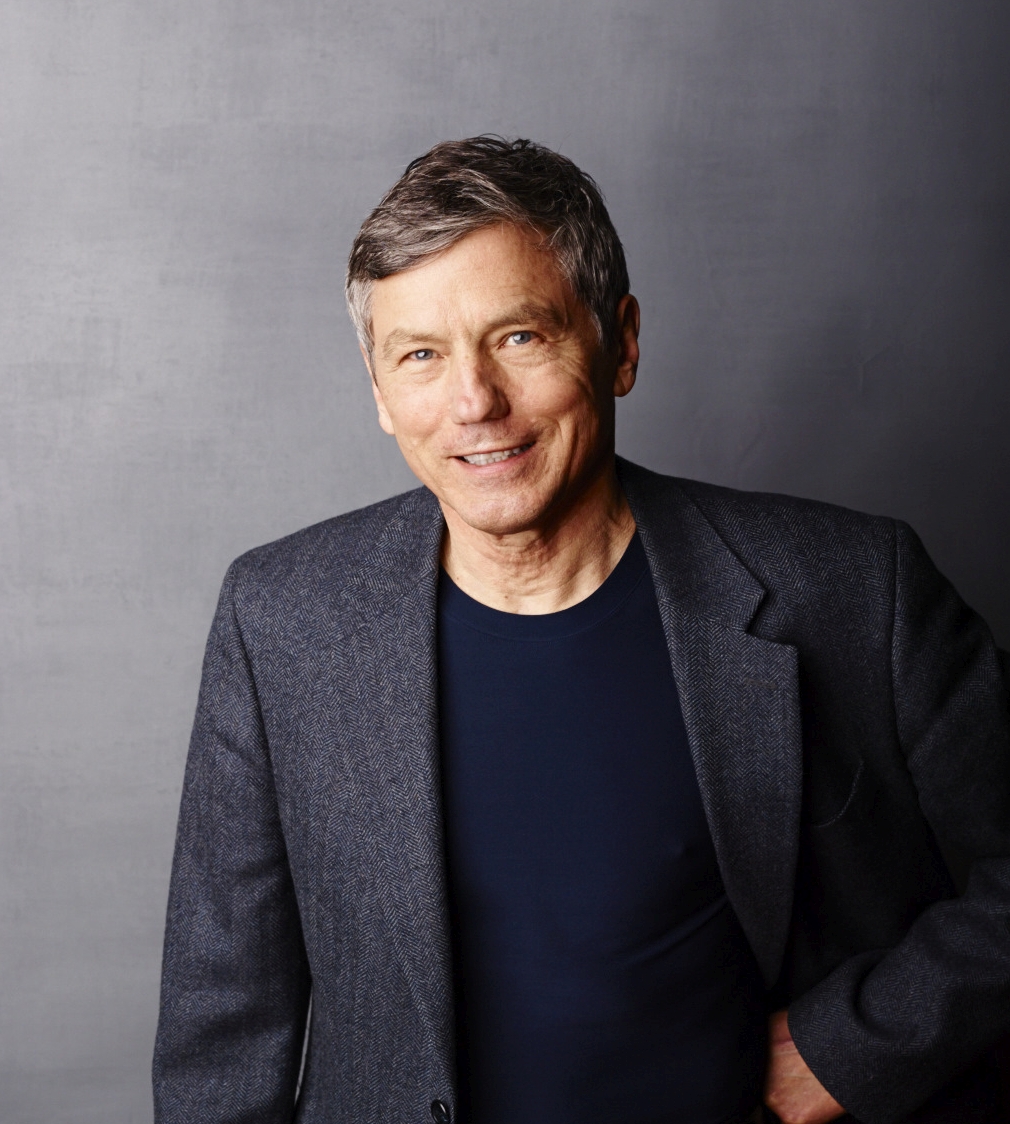 The world’s foremost expert on the clinical use of telomerase for age-related diseases, Dr. Michael Fossel has lectured at the National Institute for Health and the Smithsonian Institute, and continues to lecture at universities, institutes, and conferences throughout the world. He has appeared on Good Morning America, ABC 20/20, NBC Extra, Fox Network, CNN, BBC, Discovery Channel, and regularly on NPR. He is currently working to bring telomerase to human trials for Alzheimer’s disease.
The world’s foremost expert on the clinical use of telomerase for age-related diseases, Dr. Michael Fossel has lectured at the National Institute for Health and the Smithsonian Institute, and continues to lecture at universities, institutes, and conferences throughout the world. He has appeared on Good Morning America, ABC 20/20, NBC Extra, Fox Network, CNN, BBC, Discovery Channel, and regularly on NPR. He is currently working to bring telomerase to human trials for Alzheimer’s disease.
Related articles
- Why We Age
- Michael Fossel on Singularity 1 on 1: Compassion is the reason to reverse aging!
- BioViva CEO Liz Parrish on Singularity 1on1: Gene Therapy is NOT a Monstrous Science
- Aubrey de Grey on Singularity 1 on 1: Better Funding and Advocacy Can Defeat Aging
- Until: Who wants to live for ever? [A Short Doc]
- Bill Andrews on Singularity 1 on 1: Ageing is not going to cure itself!
- The Immortalists: David Alvarado and Jason Sussberg on Singularity 1 on 1





